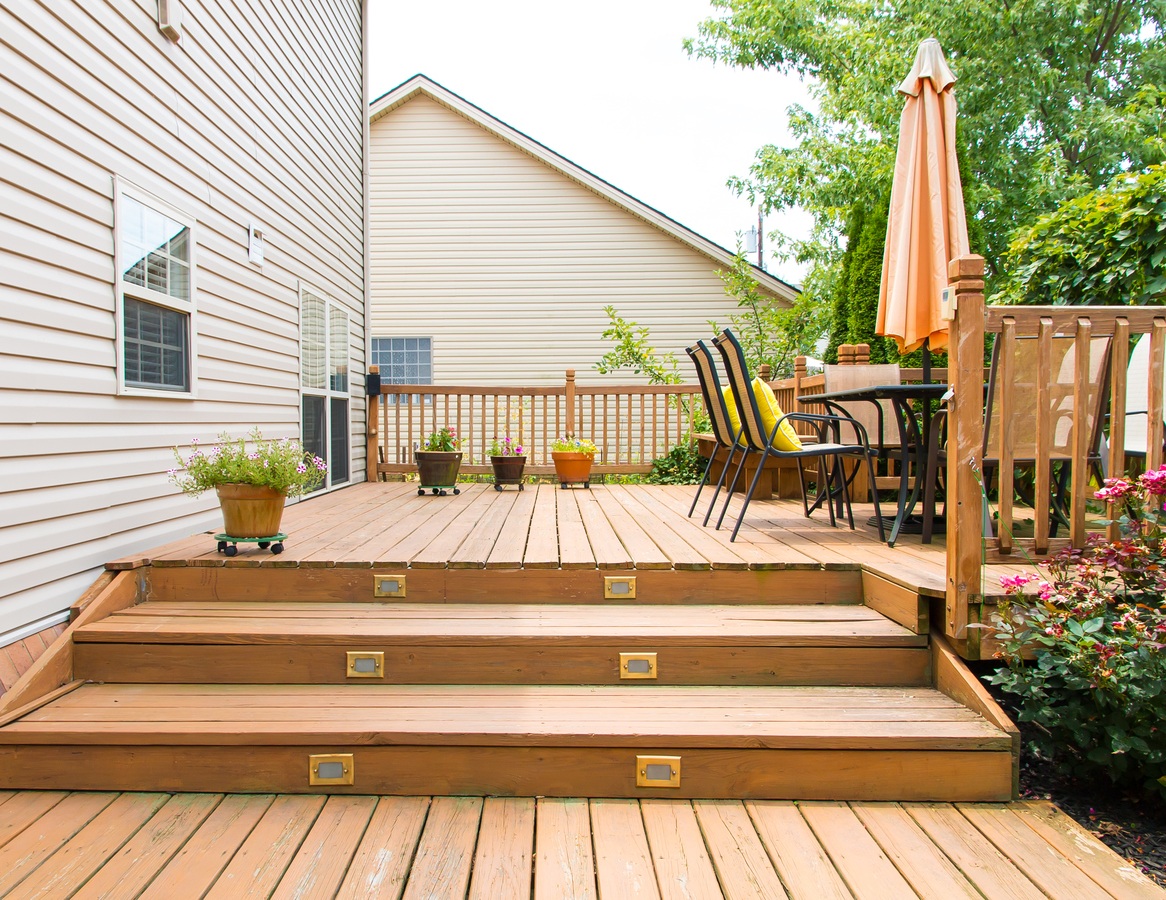Decks are one of the most sought-out features for buyers and renters. In recent years, they are replacing patios and front porches as social hubs: they are pushing the boundaries of how we use and perceive the space. Homes with one are usually able to fetch a higher price than the ones without it. Even sprucing up your existing deck can make a difference.
On the flipside, there are many moving parts to factor in, including materials, design styles, features, size, costs, etc. This means you have to come up with a plan and take your time fleshing out the project. Here is how to maximize ROI, improve the curb appeal, and soak in the sun in one stroke.

Setting the stage
Decks do not come cheap, but they tend to pay dividends. It is estimated that with this home improvement project, one can recoup up to 80% of the investment. Naturally, the returns depend on the size of the project, as well as materials and design solutions you choose. For instance, a low-profile hardwood deck, to cover 15m², with hiring a professional can cost between £2,000 and £3,000 which can increase property value by a whopping 30%. On the other hand, a 80m² pressure-treated wooden deck pushes the ROI above 80%.
Before you start swinging your hammer, though, there are several key considerations to make. First of all, pick the position wisely. A deck should be easily accessible from an indoor living area. In other words, the best kinds of decks serve as true extensions of your home, fostering a better flow between the indoor and outdoor realm. It is also preferable to have a nice view, although that often has to be weighed against privacy concerns.
A sense of clear purpose
Furthermore, to figure out the type of deck and design solutions, you have to think about the intended use. Do you wish to embrace an outdoor lifestyle at its finest and have a luxury gathering space? In that case, you need a wide deck that will be able to accommodate large furniture. Or, is your goal to cater to a specific group of buyers and boost the price tag as much as possible? This may entice you to opt for a smaller deck that is of top-notch quality.

Speaking of which, another key decision is related to the type of material and finish. The spectrum of choice is wide: it includes soft and sleek compounds, natural and rough woods, and everything in between. Wooden decks are more affordable than those made from composite materials. They also have a higher cost vs. value ratio (around 70% on average). Just bear in mind that in general, more expensive and upscale decks involve a diminished ROI.
So, you might not want to go overboard.
Exploring wood options
And when it comes to the specific type of wood, you need to think about maintenance requirements, visual appeal, lifecycle costs, durability, and longevity. The main dilemma is whether to pick hardwood (teak, ipe, oak, etc.) or softwood (pine, spruce, cedar, etc.). Well, in a nutshell, hardwood is more durable, weather-resistant, and long-lasting. The only problem is that it is also much more expensive than softwood.
Pressure-treated wood is another budget option that is relatively sturdy and resistant to moisture and insects (thanks to chemical prevention treatment). However, it also faces you with more maintenance tasks. On top of that, you also have modified wood that is superior in almost every regard except in terms of price. This is to say that there are no one-size-fits-all solutions, only solutions that make more or less sense in your particular case.
You can also follow your stylistic preferences. Redwood and cedar are paragons of a natural, classic look. Tropical hardwoods give of a luxury feel and are really stunning. Modified wood can be designed to be smooth and polished, but also rustic and flawed. Whatever design option you go for, it needs to fit the bigger picture— architectural features and overall design of the house.
Essentials and extras
At this point, it might be wise to focus on must-have deck features. Namely, due to the lack of extending roof from the house, decks require shade from different sources. To keep the scorching rays at bay, you can construct a cover or use custom shade sails. If you have a towering tree nearby, you are in luck because you have a natural shade warden. But, apart from overhead protection, you may need to add features that shelter you from other elements.
Once that is sorted out, you can go an extra mile to make your outdoor space more comfortable and cozy. For example, you could include built-in seating and storage space to enhance utility. Some homeowners even decided to invest in a striking focal point such as a fire pit. But, it is important to note that not all of these features provide a good ROI.
Finally, you should be careful about one thing: it is possible to inflate the price too much and turn buyers away. Then again, if you are building for your own sake, you do not have to worry about that. The only limits are your budget and your imagination.
Measure twice and cut once
Decks are a quintessential home improvement project that comes with a wealth of benefits. They are measured in both financial rewards and your enjoyment and happiness. The tricky thing, though, is that there are no predetermined answers to which deck is the best. Moreover, the costs and returns vary wildly. So, get down to the basics before considering bells and whistles. The choices depend on your goals and preferences. Remember that you are selling or building a lifestyle, not just a feature of certain physical properties.
